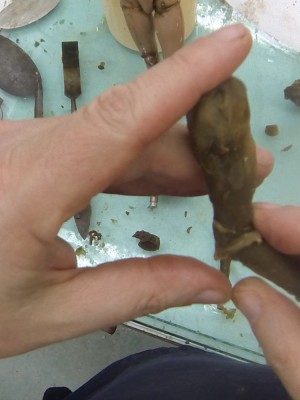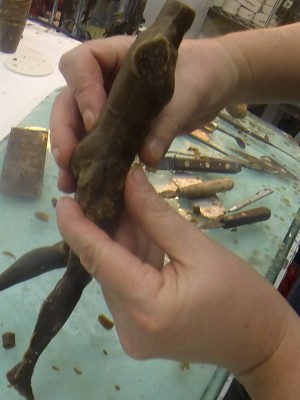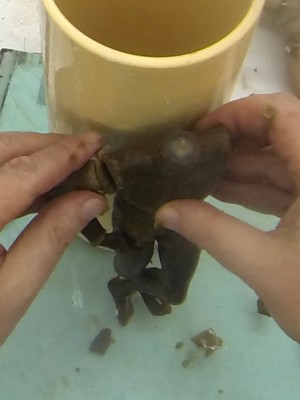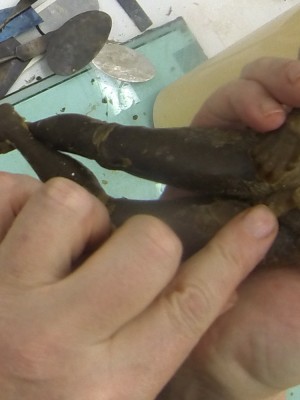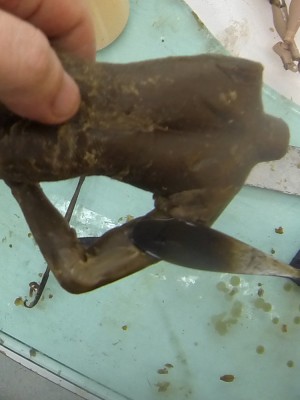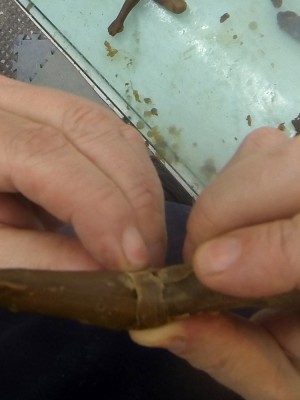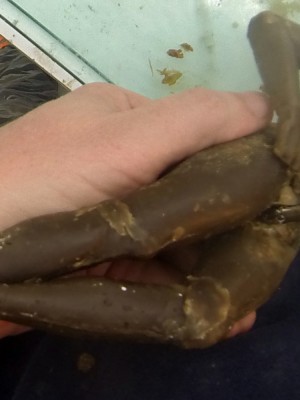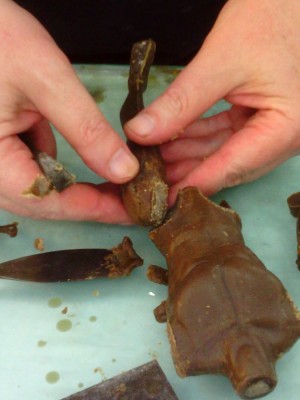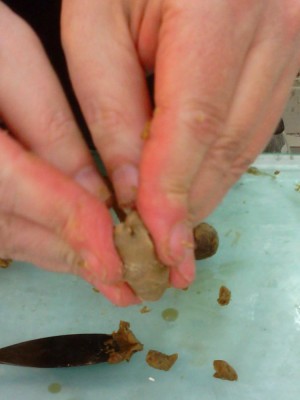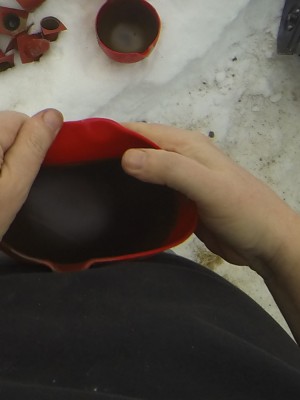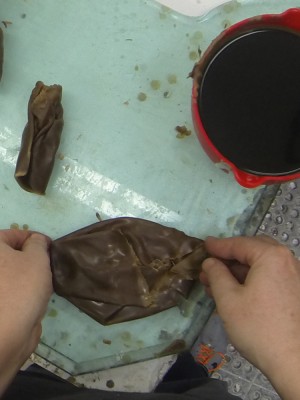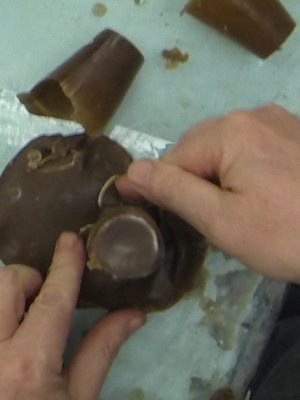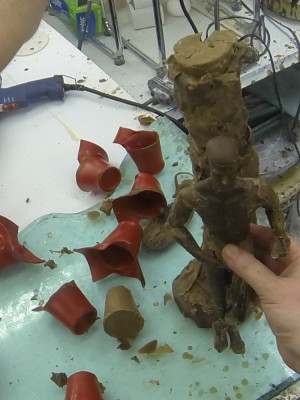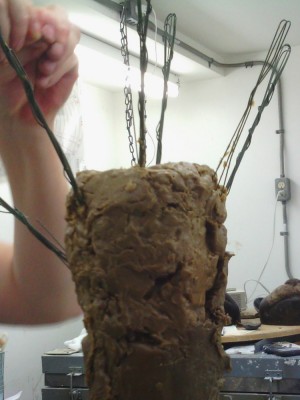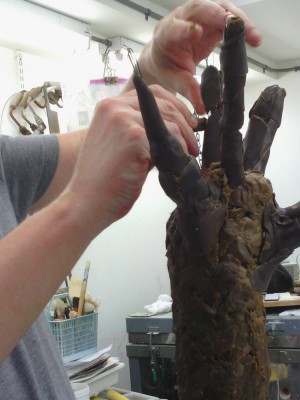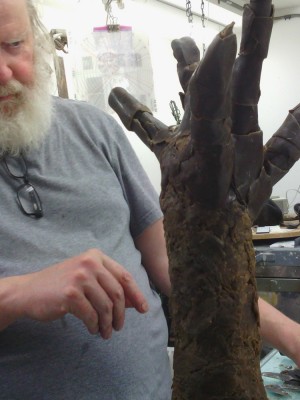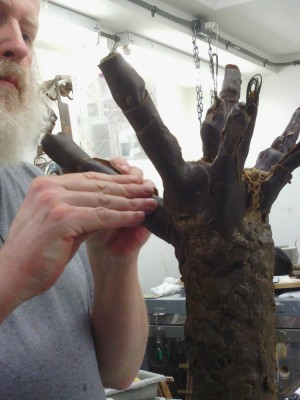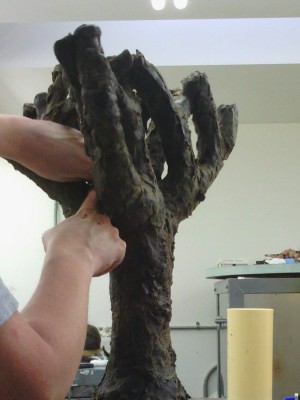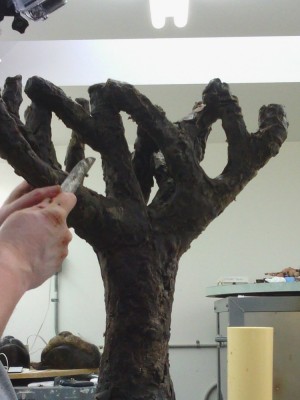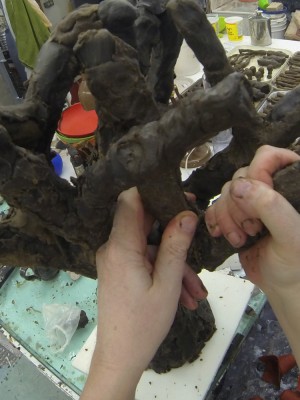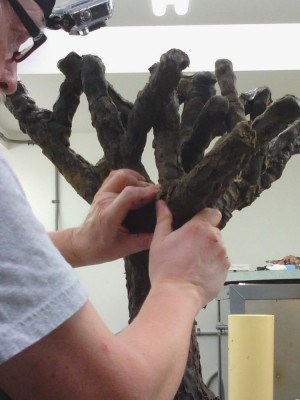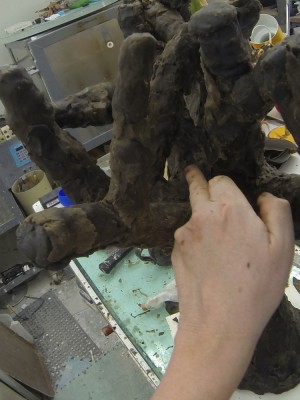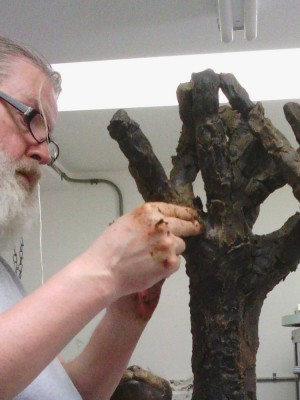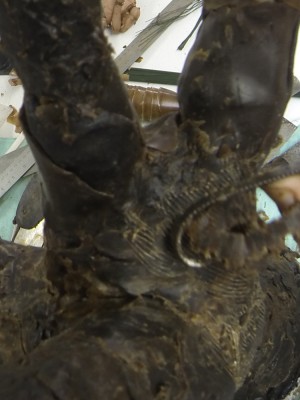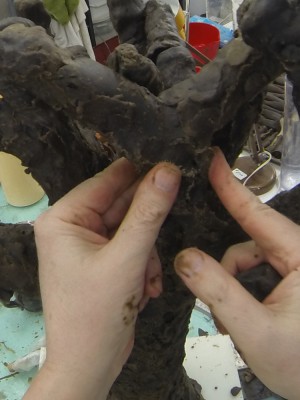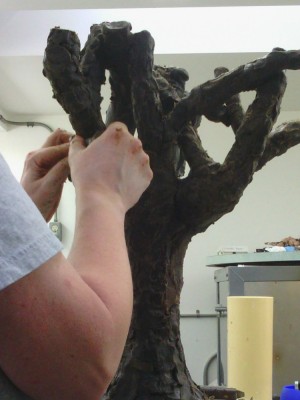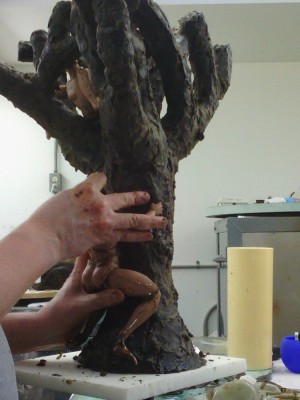There are lessons that must be learned when working with wax parts. It took a few tries to get the process working. Plenty to learn still.
I had imagined that I would just tack the wax parts together with a hot knife. Parts assembled this way come apart with the slightest pressure. Had to do something closer to hand building. Prepared soft pliable wads to press between scored wax surfaces. Treating the wax like clay made a stronger join.
There are basically three ways to form with the wax. Thin sheets, slurry and wedging.
A coating stuck to the silicone containers after pouring the wax parts. Once the coating cooled, it can be peeled from the silicone. When wax is this thin, the heat from your hands makes it soft almost instantly. You can press a sheet between your hands for a moment and then instantly roll it into a coil or laminate it to the surface of your model. A fast way to create form.
Wax slurry is the term I am using to describe the properties wax has at a stage in its cooling from liquid. It reaches the consistency of soft butter. It can be scooped up with a knife and used to fill gaps in the model. Once the slurry has cooled, more wax can be added to the surface.
The last method is hand wedging. Further in the cooling cycle, a point is reached where the wax is not so sticky anymore but still very soft and flexible. I take a handful of this and squeeze it into a coil in my hands which I fold in half, coil again and so on until a uniform consistency is achieved. Can also fold in firmer wax to get it moving. With this you can work coils and wads into the surface of the model or use similar hand building methods to clay to bulk out a shape.
At first I was just going to make a small prop for my figure to stand against while I worked on it. It quickly evolved into the basic form of an elm tree which is an important element in the setting for the figures. I will be referring back to my earlier tile work by recreating aspects of the scenes depicted in three dimensional form. An elemental scene from a Winnipeg park populated by furries.
Some wire was used to make armatures for the branches. This gave a basic structure to roll sheets of wax around. Might look for some heavier aluminum wire to use for situations like this next time I am at the hardware store.
Both the figure and the tree need more work. Have to consider options for branches. Already reaching maximum firing hight.
All this talk about technical things. Also need to discover who the furries are.
According to Wiki, 80% of furries are male and 20% female. Not all furries can afford or desire to wear the fursuit. Many of those who self identify as furries express their fursona through other means such as the wearing of tails or the carrying of plushy animals in public settings. More about each fursona will be discovered along the way.

